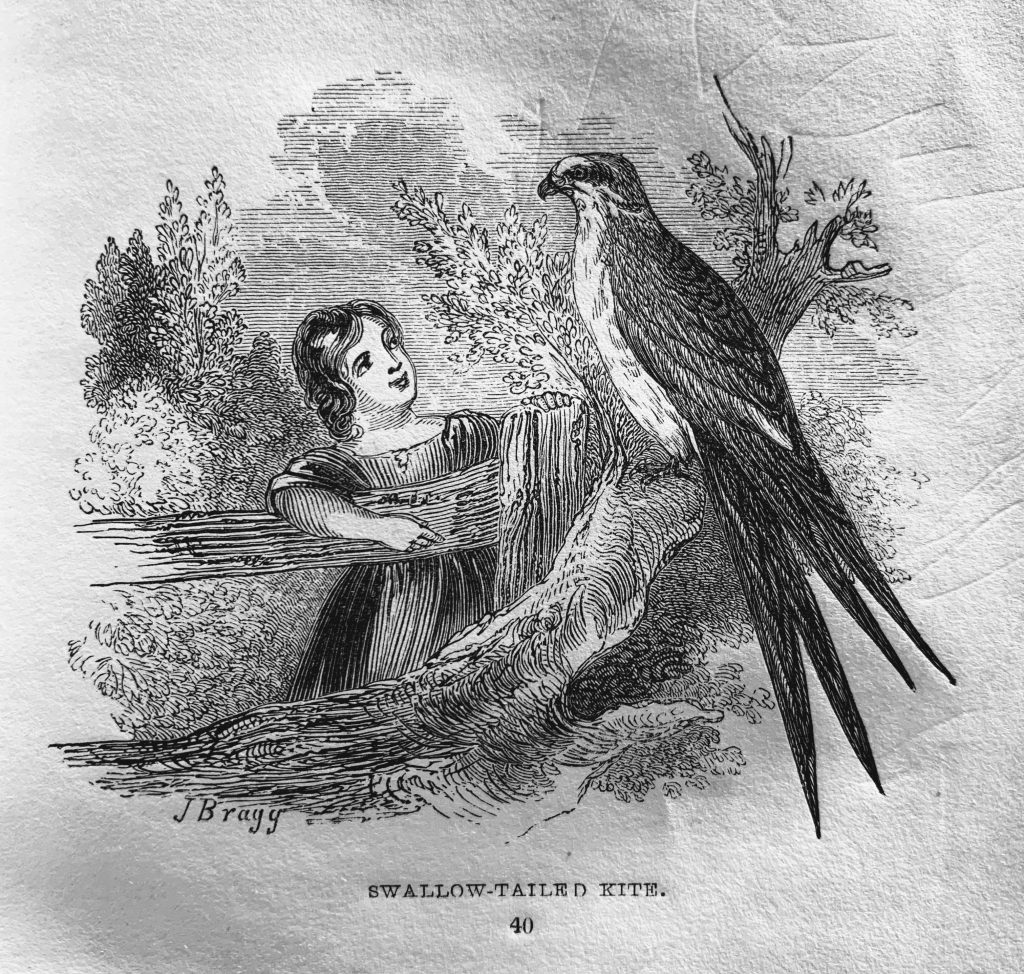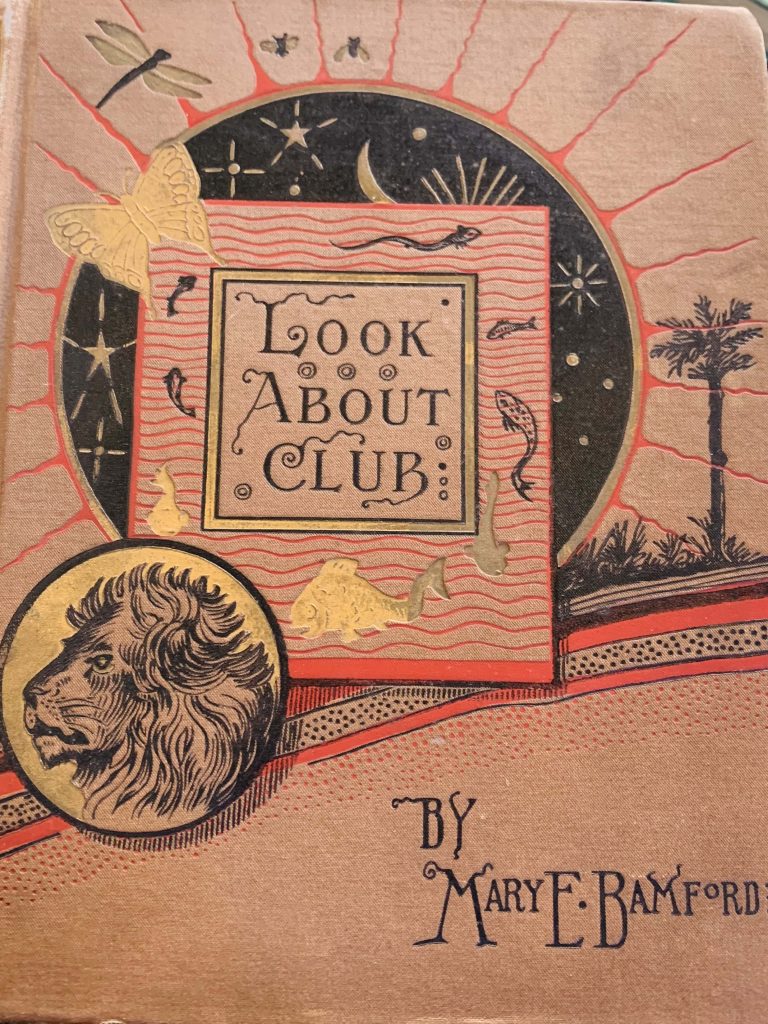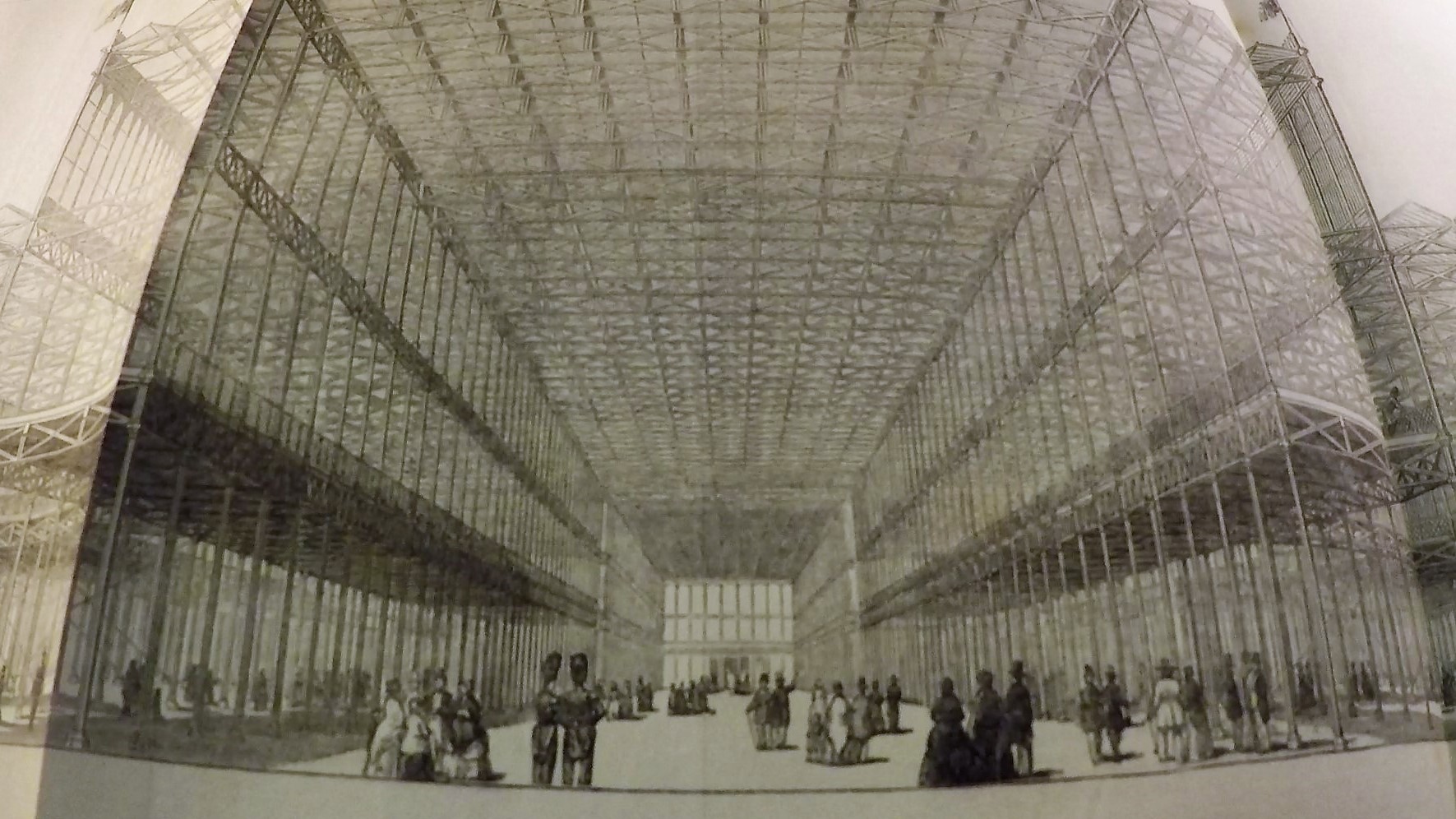This post comes to us from Discovery Fellow Hannah Whitaker
Through my Discovery Fellowship I have accessed dozens of unique and beautiful pieces of literature. My focus has primarily been on natural history; I am interested to see how natural history texts have evolved over time. I began in the Baldwin Library of Historical Children’s Literature, reading books about insects and animals written for children in the Victorian Era.

My favorite was Birds and Insects by Jane Bragg, which features a young girl with boundless curiosity waltzing through her garden and conversing with each critter she finds.
The creatures speak back, of course, responding with factual information about themselves in an almost Lewis-Carrollian way. This ability to freely converse with animals is pervasive in Victorian Children’s literature, I have found, and while less common in 20th century American literature, Marjorie Kinnan Rawlings maintained this magical ability in her posthumously released children’s story The Secret River.

These natural history books emphasize the intrinsic value of each creature,
whether written primarily for pleasure or education. Thomas Say’s reference book, American Entomology, is inscribed with the Stillingfleet poem “Each moss/ Each shell, each crawling insect, holds a rank/ Important in the plan of Him who fram’d/ This scale of beings.” This poem illustrates the author’s fondness for all creatures, regardless of shape, size, or species. Birds and Insects (1844) and The Look-About Club (1887) each highlight the importance and value of each animal. In Birds and Insects, the animals are imbued with feelings, begging the reader to discontinue hunting. The father in The Look-About Club beseeches his children to be gentle with the animals they study.
Despite evolution in writing styles, authors recognized the fragility and beauty of the natural world nearly two centuries ago; a haunting and timely warning to modern-day readers. More recent texts, such as Forest in the Sand by Marjory Bartlett Sanger (1983) and Voices of the Earth: Florida’s Environmental Storybook with Pictures to Color by Kristin Farquhar (1992) also detail the necessity of maintaining the balance of the ecosystem.














